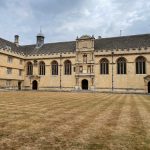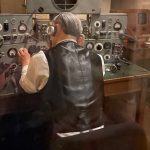Capping off the KERA British Telly Tour with a trip to ‘Dibley’ and Bletchley Park!
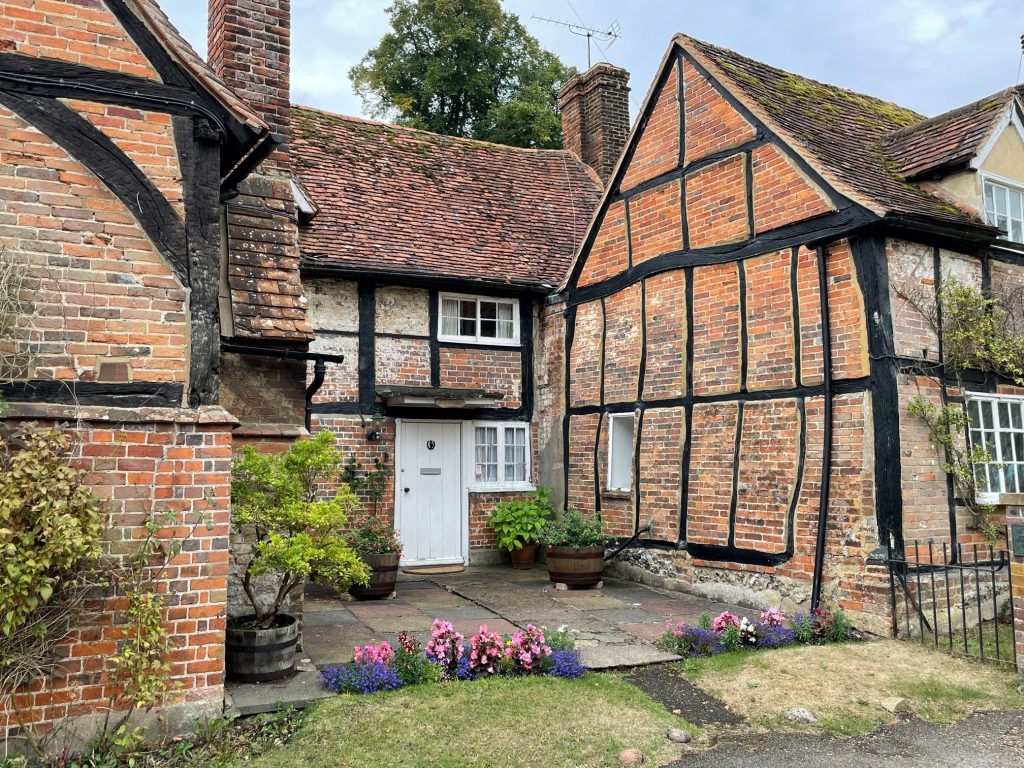
The Dibley home of Geraldine Grainger. Photo: Bill Young
Taking absolutely nothing away from our stops earlier in the week touring filming locations for Downton Abbey (Highclere Castle), Poldark (Chavenage House), Midsomer Murders (Dorchester-on-Thames), Inspector Morse/Lewis/Endeavour (Oxfordshire) and Agatha Raisin (Biddestone), the final day of the KERA British Telly Tour before returning to London may have been the best of all with a stop in Turville, yet another picturesque small English village (thankfully, no murders have occured there to my knowledge) for a behind-the-scenes look at the Vicar of Dibley and then on to Bletchley Park (Bletchley Circle) for a glimpse at the brilliant work that came out of the minds of the roughly 9000 men and women that worked tirelessly to end World War II .
While Turville, a mere 6 miles from Henley-on-Thames, may only consist of The Bull and Butcher Pub (also seen in several episodes of Midsomer Murders as The Chalk and Gown, including “Murder on St. Malley’s Day” and as The Spotted Cow in “Schooled in Murder”) a church and a host of brilliant cottages, I fully expected Geraldine Grainger to walk up at any moment to the front of the chapel and begin taping her sermon for Songs of Praise as Dibley came to life when we walked in. It was picture perfect for the chapel scenes in Vicar of Dibley.

The chapel in Turville. Photo: Bill Young
Little known Turville fact about the town pub, The Bull and Butcher Pub. It derived its name from Ann Boyelyn and King Henry VIII. Bullen’ refers to Ann Bullen, as she was known before going to the court and King Henry VIII was affectionally known as The Butcher.
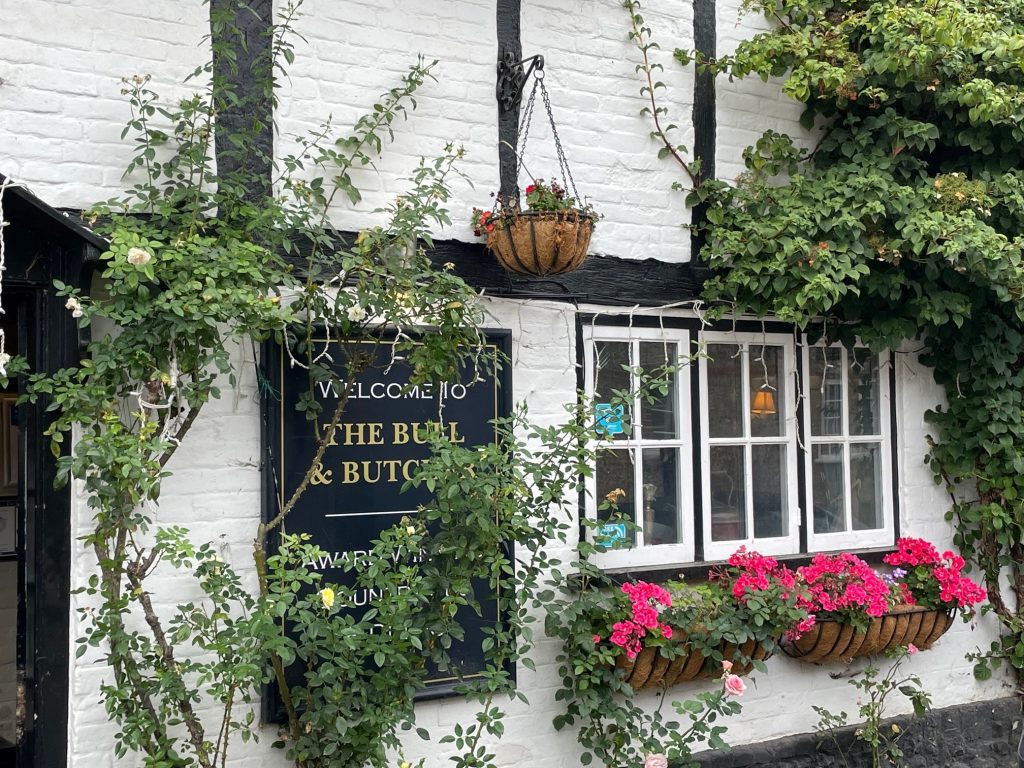
The Bull and Butcher in Turville. Photo: Bill Young
Thankfully, our brilliant coach driver, Jim, heeded the warning when we pulled up. However, shouldn’t this read “No No No No No No Parking on the Green”?
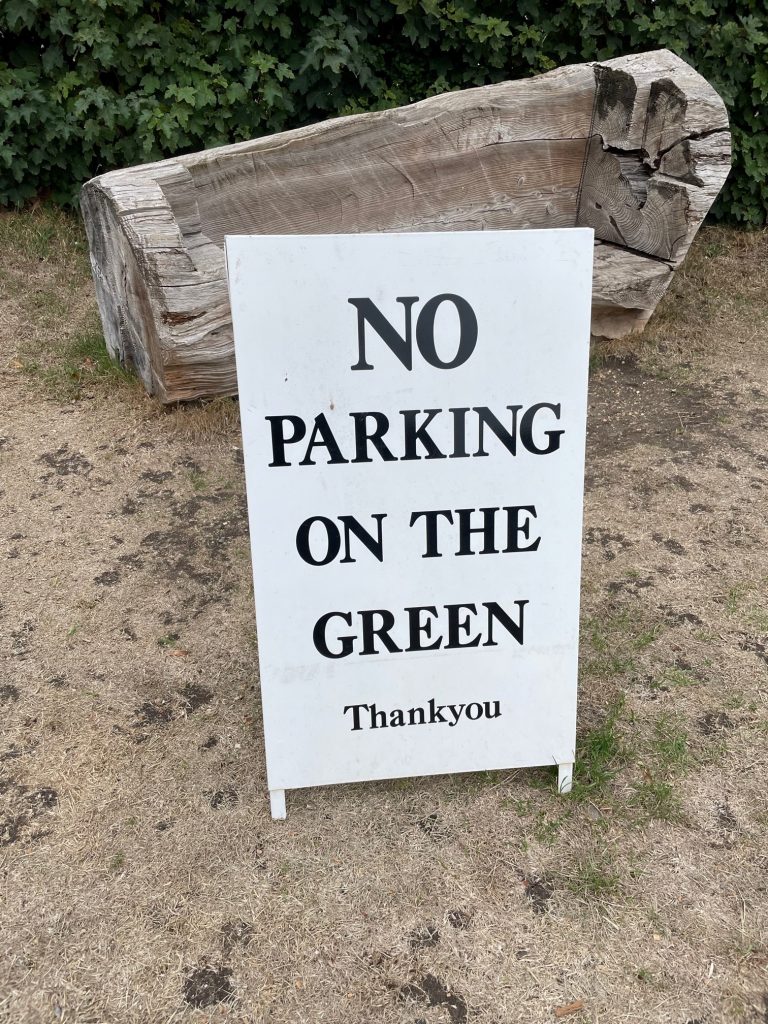
Parking instructions as only Jim Trott could give. Photo: Bill Young
Sadly, leaving Dibley (I mean, Turville), we headed out for what many on the trip have been looking forward to the most….Bletchley Park. Just driving through the gates, everyone instantly recognized the sheer magnitude of the effort that so many gave to playing a major role in ending World War II. Seeing the Bletchley Mansion was almost too much to comprehend in the short time we were there.
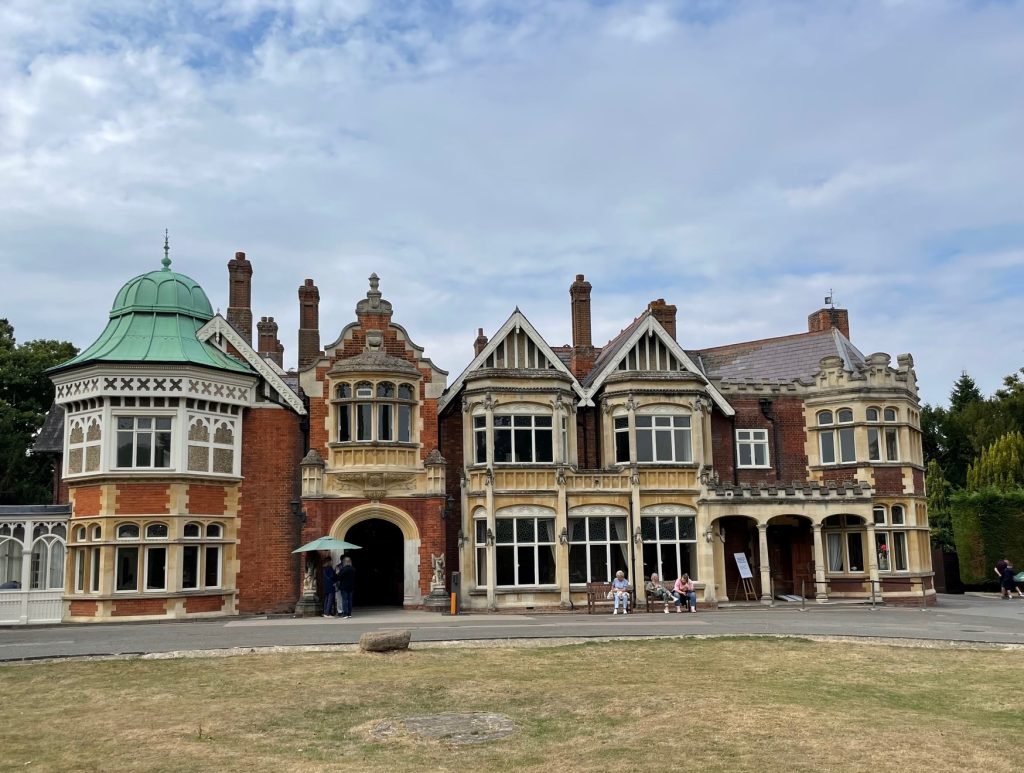
The Bletchley Mansion. Photo: Bill Young
Walking the grounds, visitors were able to both see and experience the huts and quarters where a majority of the highly secret work was being done by hundreds who not only couldn’t share any information whatsoever with anyone as to what they were doing but couldn’t do so for decades long after the war ended due to the Secrets Act. The Official Secrets Acts 1911-1989, provided the main legal protection in the UK against espionage and the unauthorised disclosure of official information.
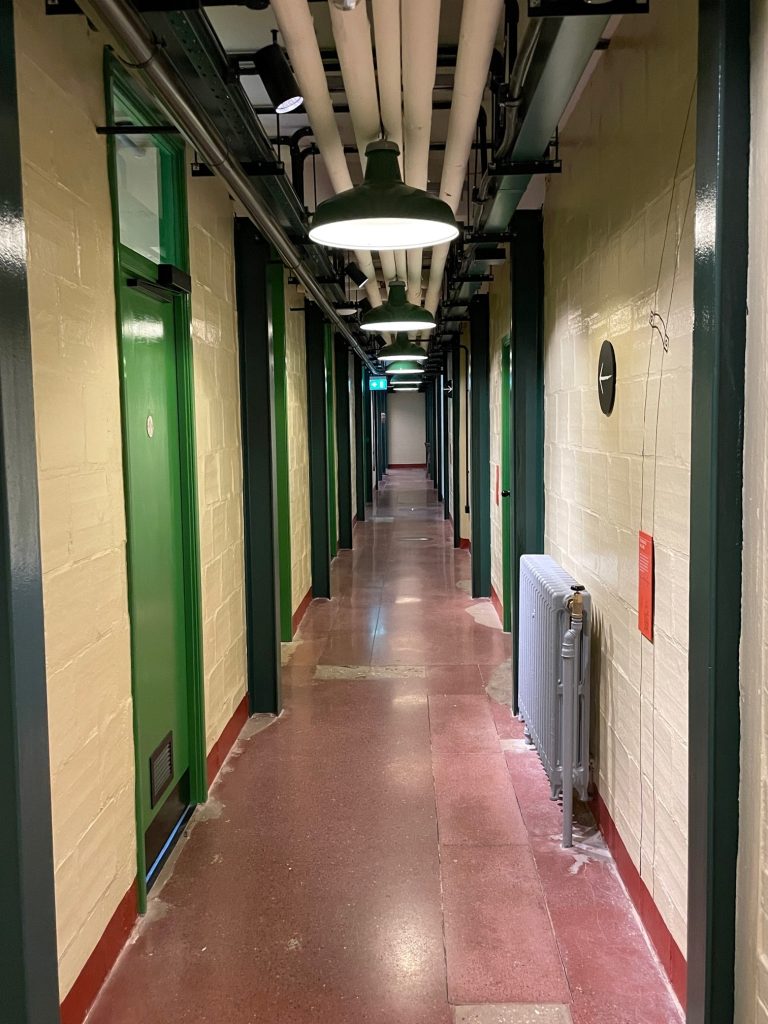
Bletchley barracks. Photo: Bill Young
Bletchley is a fairly large ‘campus’ with not only the Mansion but numerous barracks, that housed the ‘brains’ of the mission, teletype rooms, teleprinter rooms, areas for ‘fun and games’ and, the mode of transporation to get around quickly.
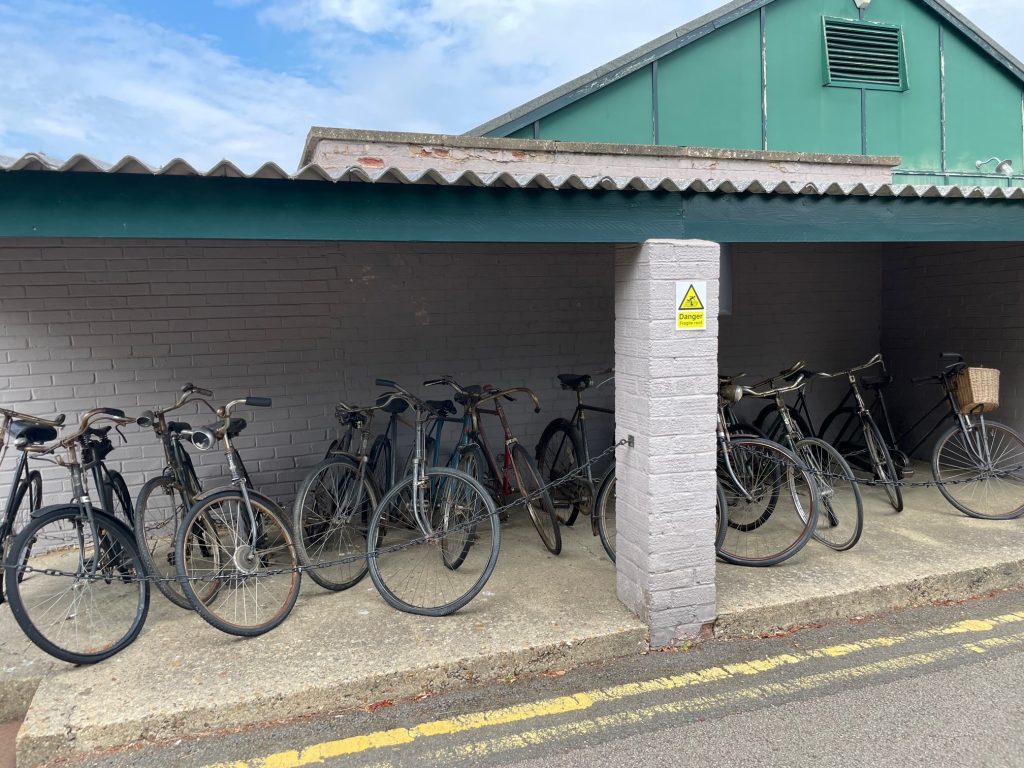
Bletchley mode of transportation. Photo: Bill Young
Virtually all of the contents of Bletchley were destroyed after the war. Much of the exhibit portions were reconstructed in later years to provide a glimpse as to how the work was done to encipher military messages. The Enigma machines had a keyboard like a typewriter whereby messages were typed into the machine to scramble them.
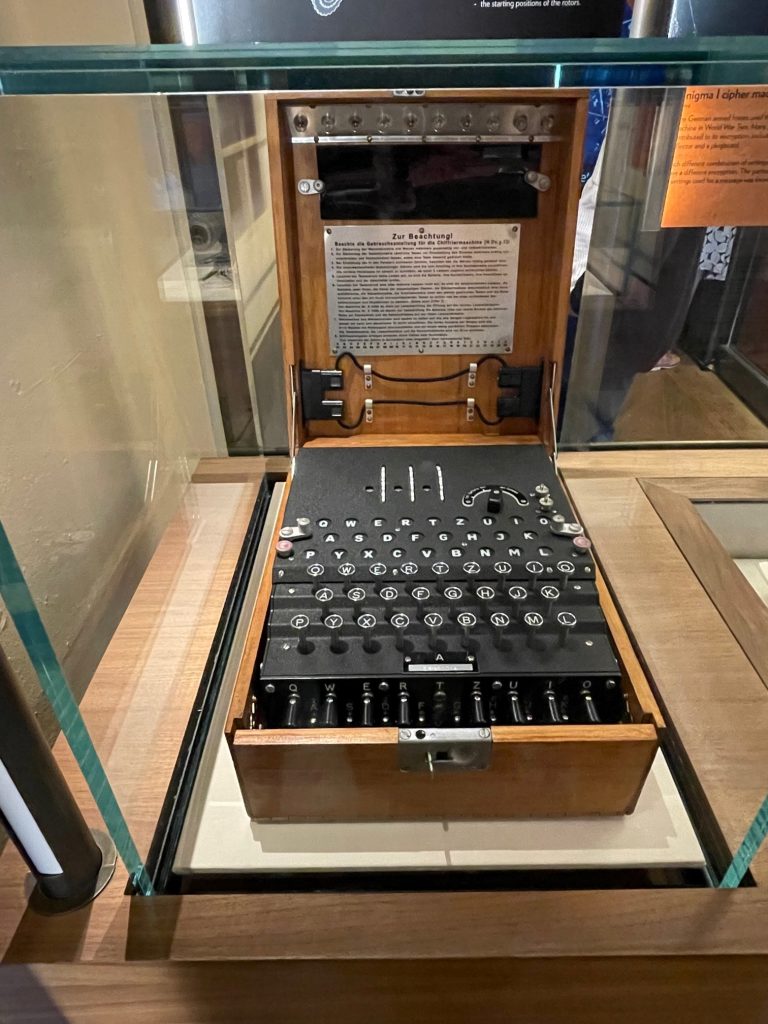
Bletchley maching…breaking Enigma. Photo: Bill Young
Each time a letter key was pressed, the machine changed it to a different letter. Enigma messages could only be deciphered using a key, which was a bit like a password. Keys changed from message to message with Enigma procedures making its messages even harder to decipher.
Clearly, by the time war broke out, breaking Enigma was a top priority.
Sadly, it was time to head back to London for a final night together before everyone returned to Texas with visions of what our fabulous adventure with the 2023 Transcendent Travel/KERA Tour might bring next year at this time.

Bletchley Park in the rear view mirror. Photo: Bill Young
Cheers and Stay Tuned!
In: Locations,Odds & Sods


